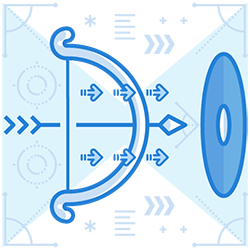The Difference Between Phishing and Spear Phishing
Currently, there are 12 types of cybercrimes in the world. One major one that you’ve probably run into is phishing. Ever receive a suspicious email asking you to confirm an account or risk deactivation? That’s most likely a phishing attack.
Another type of phishing you may encounter is spear phishing. Here, you’ll learn about the spear phishing vs phishing so you can tell when you’re under spear phishing attack and how to prevent spear phishing.

What is phishing?
So What is Phishing? phishing is a scam cybercriminals run to get people to reveal their sensitive information unwittingly. They accomplish this by creating fake emails and websites, which is called spoofing.
Victims believe these spoofed emails and sites are legitimate so they log in. As a result, the cybercriminals receive the login details, which they use to try and access other accounts across different websites. Other types of information they obtain include credit card and bank account numbers.
MORE : How to Identify a Phishing Email?
What is spear phishing?
Spear phishing is a type of phishing, but more targeted. Scammers typically go after either an individual or business. As with regular phishing, cybercriminals try to trick people into handing over their credentials. However, the goal reaches farther than just financial details.
Instead, they aim to access sensitive company data and trade secrets. If cybercriminals can get hold of these things, they stand to make a significant amount of money by either blackmailing the organization or selling the data.
MORE : Example of Spear Phishing


What is the difference between phishing and spear phishing?
Phishing is a low-effort scam since the cybercriminal sends out one email to a large group of people. Because of the massive audience, the email content must be generic enough to dupe a good number of them. You can avoid being phished following phishing prevention best practices.
On the other hand, spear phishing is customized to the victims, so scammers must do extensive research to be convincing. For instance, if a person frequents a golf course, the spoofed email may offer a free tee time with confirmation. Motivated by the free offer, the victim will click on the link, which then downloads malware onto their computer.
Treat every email with caution
The difference between phishing and spear phishing may be evident, but the difference between spear phishing and legitimate emails may not be. Cybercriminals can spoof emails so well that even professionals can’t tell the difference.
A good rule of thumb is to treat every email as a suspicious one.
But an even better idea is to implement phishing prevention software. It can tell the difference between spoofed and genuine emails, sending the spoofed ones to the trash straight away. That way, you’ll have peace of mind whenever you open your inbox.
MORE : How to Protect from Phishing?

Enterprise-class email protection without the enterprise price
For flexible per-user pricing, PhishProtection’s integrated email security solution protects your employees from business email compromise (BEC) and many other email threats. 24×7. On any device. With features you’d expect in more expensive solutions:
All Plans Come With
- Stops business email compromise (BEC)
- Stops brand forgery emails
- Stop threatening emails before they reach the inbox
- Continuous link checking
- Real-time website scanning
- Real time alerts to users and administrators
- Protection with settings you control
- Protection against zero day vulnerabilities
- Complete situational awareness from web-based console
Join 7500+ Organizations that use Phish Protection
Phish Protection works with System Administrators, IT Professionals and IT Executives in thousands of companies worldwide. Sign up and protect your organization from phishing attacks in less than 5 minutes



